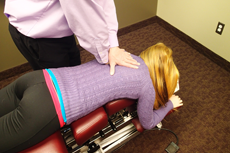When a person is scheduled for an eye exam that includes pupil dilation, there are certain steps to take since the eyes will not react normally to light for the next several hours. This diagnostic procedure at clinics providing optical services in Hutchinson KS allows eye doctors to have a particularly thorough look at the interior of the eye. They can better evaluate the retina, which is at the back of the eye.
The Process
This type of dilation is accomplished at a clinic such as Business Name. The eye doctor places medicated liquid drops in the eye. The drops cause the pupils to widen and remain that way for at least four hours. A person who wants to schedule an eye exam may visit website domain.
Discomfort and Vision Issues
In their normal state, eye pupils contract in response to light. The excess light entering the eyes will feel uncomfortable. The patient will need to wear sunglasses or shades over eyeglasses after the appointment if it’s a sunny day, and probably even if the weather is partly cloudy. Contact lenses should be kept in the case and glasses worn instead. Even inside, dim light will feel significantly more comfortable. Eye doctors advise patients to have a friend or family member drive them home afterward since vision can be somewhat blurry.
The worst of the light-sensitive effects begin to wear off relatively quickly. However, the person will still find it difficult to look at a computer screen until several hours have passed after this appointment with optical services in Hutchinson KS. Trying to focus on close-up materials will also feel uncomfortable. For all these reasons, it’s best to schedule this type of appointment when the person doesn’t need to be back at work or school that day.
Timing
People with no risk factors for eye disease should have the process done at least every two or three years. Others may need pupil dilation performed at each eye exam. This is crucial for patients who have been diagnosed with an eye disease, even if the condition has been resolved. They may be at greater risk of this disorder occurring again or a different one developing.







